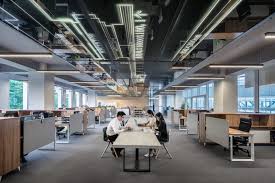From cloud computing and collaborative software to smart 오피가이드 solutions and video conferencing tools, technology streamlines operations, enhances connectivity, and enables seamless communication across geographies. Moreover, the integration of IoT (Internet of Things) devices and AI-powered systems has optimized tasks, from managing schedules to automating routine processes.
Employee Well-being
The well-being of employees has gained significant attention in recent years, and offices now prioritize creating environments that foster wellness. Ergonomic furniture, adjustable desks, and proper lighting are employed to support physical health, while initiatives like mindfulness programs, wellness rooms, and on-site fitness facilities aim to address mental well-being.
Flexible Work Arrangements
The COVID-19 pandemic accelerated the adoption of remote work and flexible arrangements. Hybrid work models have emerged, allowing employees to split their time between the office and remote locations. As a result, offices are being reimagined to accommodate the changing needs of a more distributed workforce, focusing on adaptability and providing a seamless experience regardless of location.
Conclusion
The office remains an integral part of the professional landscape, continuously evolving to meet the needs of modern businesses and their employees. As workplaces embrace innovation, prioritize employee well-being, and adapt to changing work dynamics, the office will continue to serve as a hub for collaboration, creativity, and productivity in the years to come.

